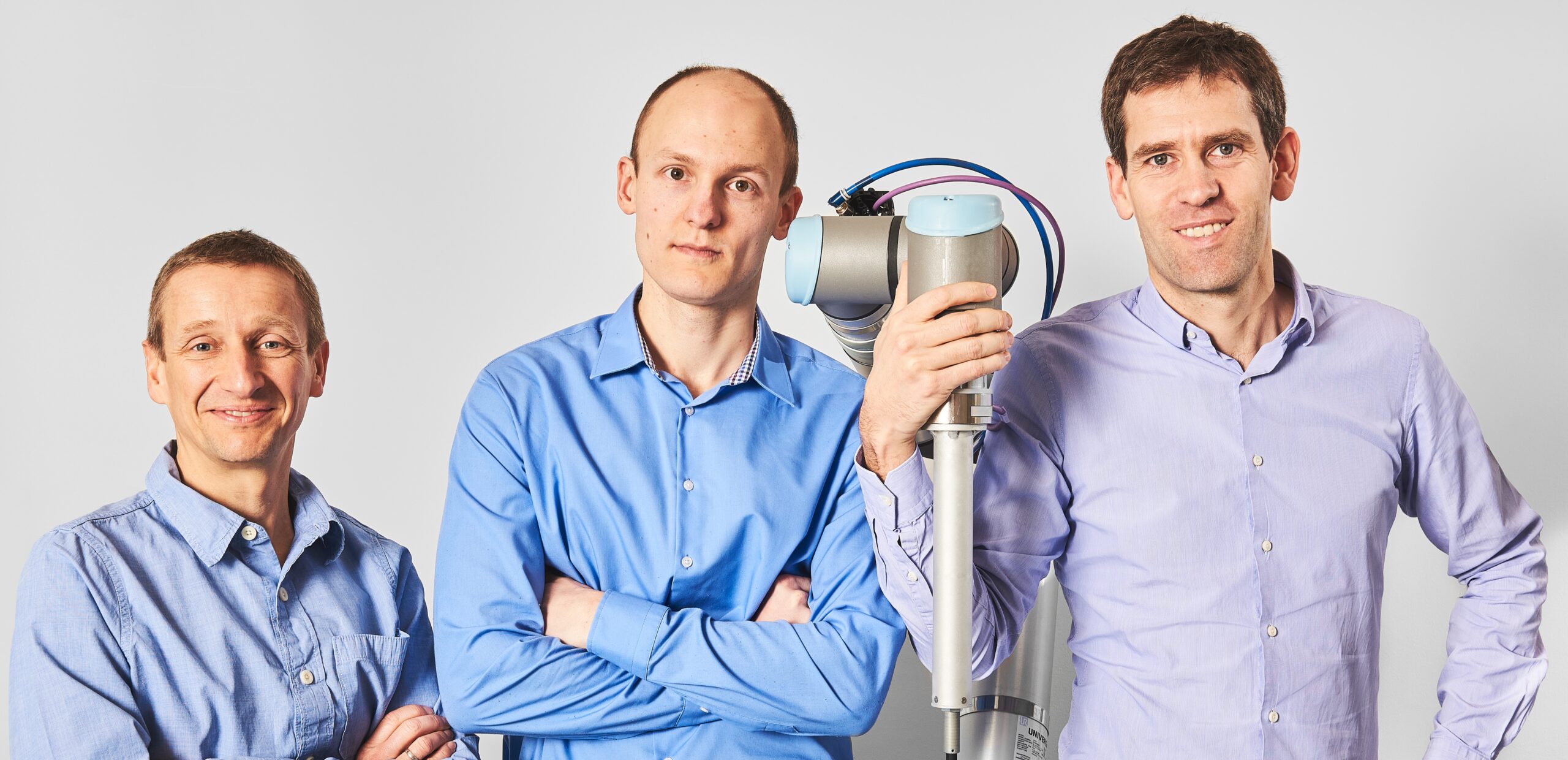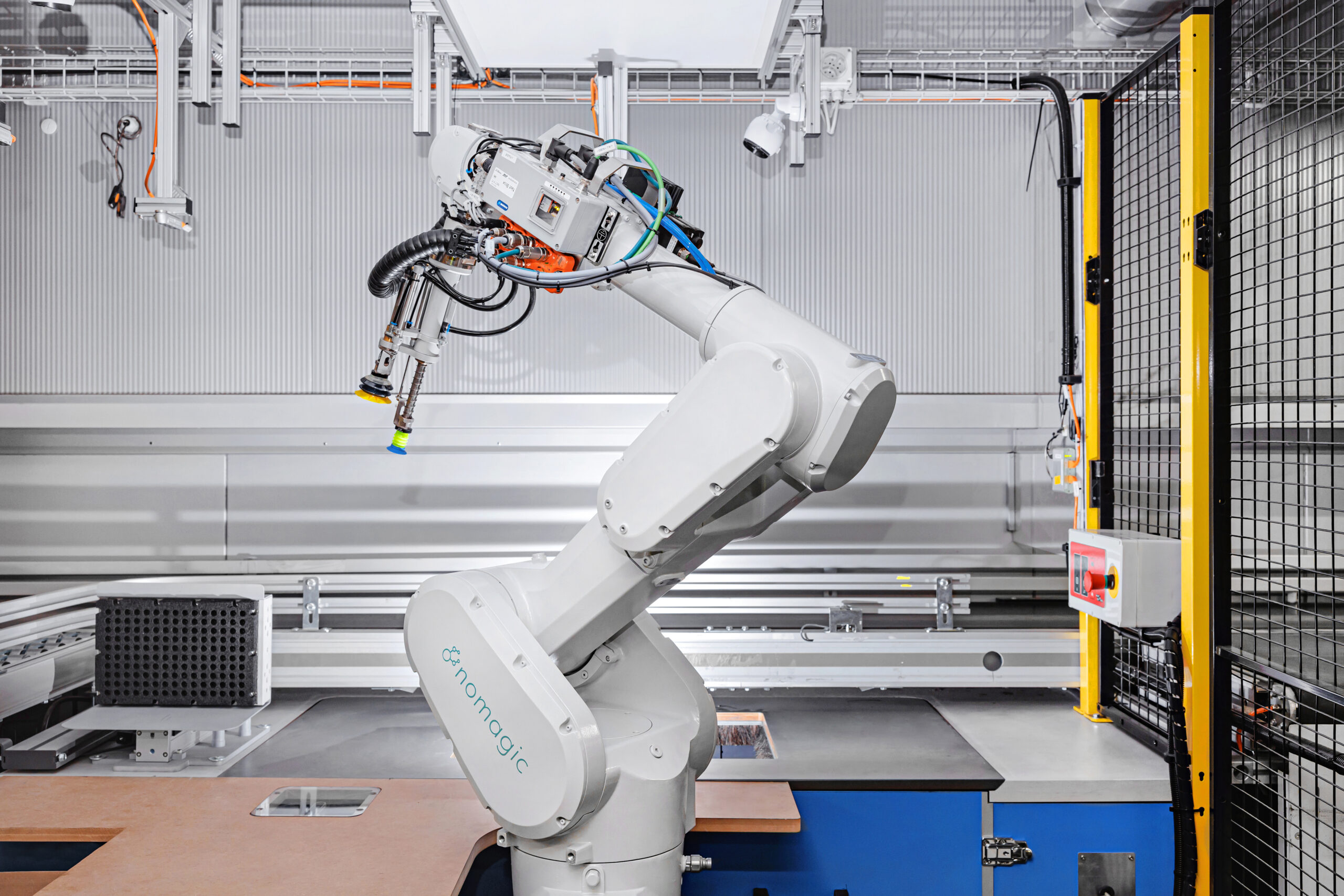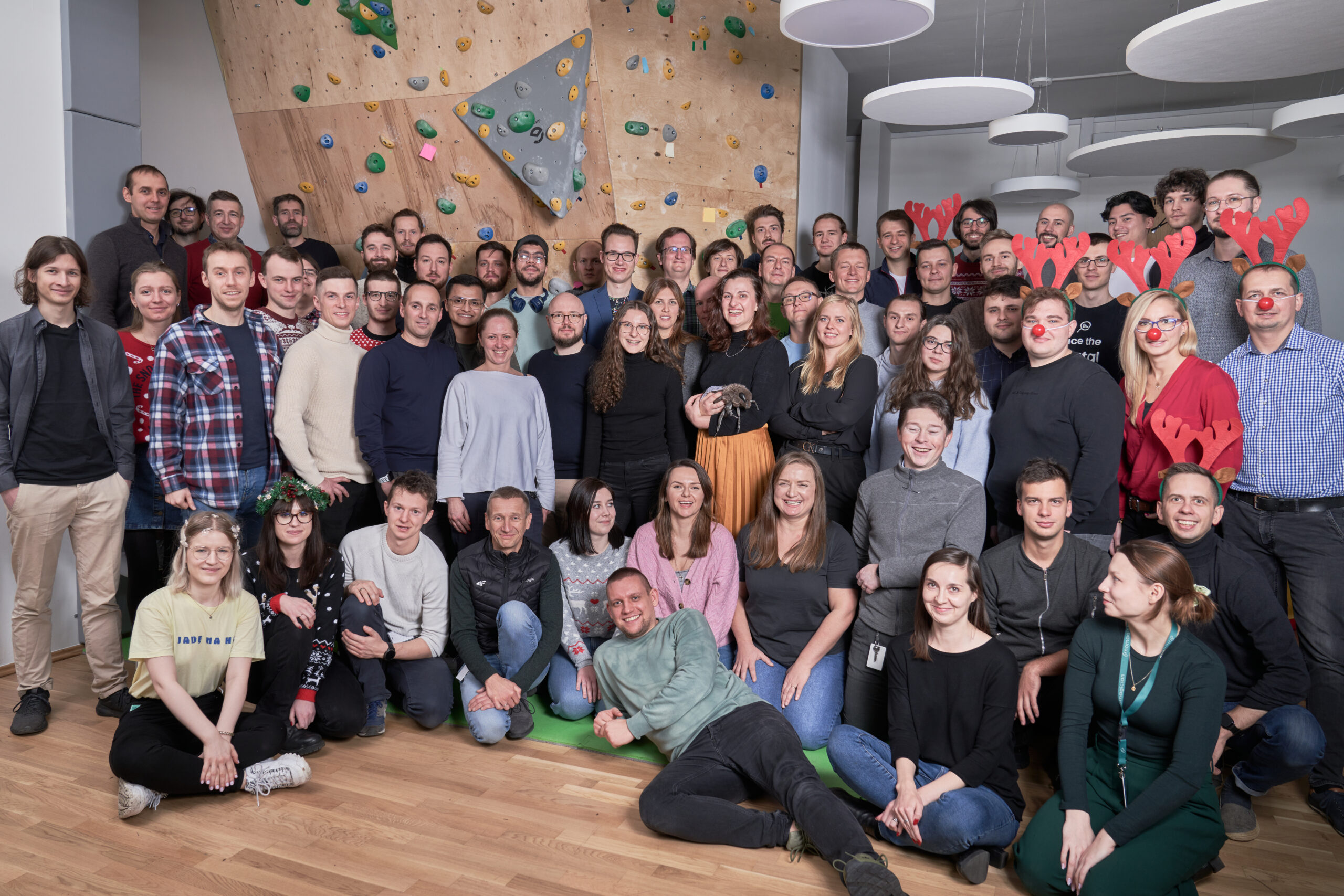Introducing Kacper and Nomagic
Q: Could you briefly introduce yourself and your startup?
A: I’m Kacper, co-founder and CEO of Nomagic. My journey in startups began during the late nineties’ dot-com boom in California. After several years in the U.S., I co-founded a company in 1999. We grew to over 100 employees, but unfortunately, it failed during the dot-com bust. Despite this setback, I remained passionate about startups. Our system even contributed to the rendering of the Matrix 3 movie, proving that our work wasn’t just part of a bubble; it had practical applications.
Post this experience, I returned to Poland to be closer to family. A few years later, when Google announced their new engineering office in Poland, I joined as the second engineer. I spent eight years there, primarily as an engineering director, contributing to projects that later evolved into the Google Cloud Platform. During my tenure, Google expanded from 5,000 to 50,000 employees, a period of significant growth.
Feeling the urge to return to the startup scene, I left Google and joined a startup in Berlin as CTO. After a couple of years, I started Nomagic, driven by the vision of automating manual human work with intelligent robots using machine learning and deep learning. Along with my co-founders Marek and Tristan, and our first two engineers, we embarked on this journey. Today, nearly six and a half years later, we have grown to about 75 people. Our R&D center is in Warsaw, Poland, and we have team members across Germany, France, and other locations, focusing on various market aspects.
The Decision to Join Plug and Play
Q: What motivated you to join Plug and Play?
A: Our decision to join Plug and Play was rooted in our journey of refining our focus and expertise. Initially, Nomagic was inspired by a technological breakthrough I read about in a Google Brain research paper, which involved a neural network adept at picking items. This discovery suggested a significant shift in machine capabilities. At the outset, we explored both manufacturing and logistics. However, we soon realized that manufacturing was distinct and decided to concentrate on logistics for manufacturing. After collaborating with a major car manufacturer, we noticed the stark differences between automotive parts and e-commerce logistics. This led us to specialize in e-commerce fulfillment.
Our founding team lacked experience in specific domains like manufacturing, logistics, retail, or warehousing. We were actively seeking opportunities to learn, establish industry contacts, and augment our team with experienced professionals. Lafayette Plug and Play in Paris emerged as an ideal choice, particularly because of its focus on retail, which closely aligns with e-commerce.
Participating in Plug and Play provided us with invaluable experiences.
We had access to mentorship sessions where industry experts shared insights, answered our questions, and offered feedback on our services. These interactions were incredibly beneficial, leading to numerous valuable discussions and learnings. The environment at Plug and Play facilitated a deeper understanding of our target market and helped us establish connections that were vital for our growth in the e-commerce fulfillment sector.
Recollecting the Plug and Play Application Process
Q: Can you recall anything about the application process for Plug and Play?
A: Reflecting back, the specifics of the Plug and Play application process are a bit hazy, as it was quite some time ago. However, I remember it wasn’t particularly challenging for a startup to complete. Generally, these application processes, including the one for Plug and Play, tend to follow a standard format. Typically, they require recording a video, writing some details about the startup, and participating in a pitch session. These elements are quite common in various accelerator application processes. So, while I can’t recall the exact details, these were likely the components we engaged with during our application to Plug and Play. It was a process that aligned well with the standard expectations of startup accelerator applications.
Daily Life and Mentorship in the Plug and Play Program
Q: What was a typical day like during the Plug and Play program, and how involved were the mentors?
A: The structure of the Plug and Play program was uniquely accommodating, especially since we weren’t based in Paris. The program consisted of intense two or three-day meetings spread throughout its duration. Either Tristan, my co-founder, or I would attend these sessions. They provided excellent opportunities for interacting with mentors and engaging in discussions with other startups, which was incredibly valuable. A significant part of these sessions involved preparing for the final pitch day. We received training on how to effectively pitch our ideas within a one or two-minute timeframe to a large audience. This aspect was not only fun but also highly beneficial as a practice for the demo day and other similar events.
Regarding mentor involvement, I found the mentors to be quite hands-on. Many of them had relevant experience and were able to provide immediate, actionable feedback. They were also proactive in offering introductions to other industry professionals and followed up on these connections. The mentorship sessions, though brief, were impactful. If we established a good rapport with a mentor, there was an opportunity for further engagement. I personally followed up with a few mentors, one or two of whom continued to respond to my emails even years later. In that regard, I’d say the mentors were highly engaged and contributed significantly to our experience in the program.
Reflecting on the Impact and Outcomes of Plug and Play
Q: Reflecting back, would you choose to participate in Plug and Play again, considering its impact on your business?
A: Looking back, while I appreciated the format of Plug and Play and the access it provided to relevant people and networks, the actual impact on our business was not as significant as we had hoped. For instance, we had an opportunity to meet with a board member of Galeries Lafayette in their boardroom, which was a remarkable experience.
However, we later realized that our primary market for our robots was more in Germany than in France due to higher levels of warehouse automation in Germany compared to France. Although we established strong connections with the retail network in France, these didn’t translate into substantial business outcomes because the French market wasn’t as ready for our products, leading to a lack of market fit. In hindsight, participating in a similar retail-focused accelerator program in Germany would have been more beneficial for our business.
Despite the learning opportunities it offered, the practical results for our business were limited. We only have one customer in France, and that relationship was established before we joined the program. The experience also highlighted the distinct nature of business environments in different countries; French and German businesses, for example, operate within their respective ecosystems, making it challenging to leverage connections across these markets.
So, while the program was valuable in terms of learning and networking, it didn’t translate into significant business success for us, given the market mismatch. If I had the chance to go back, I would probably opt for a program that aligns more closely with our target market and business needs.
Overcoming Challenges During the Plug Play Program
Q: During your time in the Plug and Playand program, what challenges did you face and how did you manage them?
A: The primary challenge we encountered during the Plug and Play program was managing our time effectively. With the program being in Paris and our base not in Paris, it required significant commitment. For several months, two of us from the team had to travel to Paris, spending two or three days there for each session.
This travel and participation meant that we were invariably sacrificing time that could have been spent on other crucial aspects of our startup. This trade-off in time allocation was the main hurdle. Being part of the program meant that we had to divert our focus from other important tasks, such as further developing our product or reaching out to potential customers. Balancing participation in the program with the ongoing needs of our startup was a constant juggling act.
We had to carefully weigh the benefits of being part of the accelerator against the cost of not being able to dedicate that time to other aspects of our business. In essence, the challenge was about optimizing our focus and ensuring that our involvement in the program did not detract significantly from our other priorities.
Evaluating the Impact of Plug and Play on NoMagic’s Growth
Q: How has completing the Plug and Play accelerator program influenced the current status of your company? Did it contribute to your growth and expansion into new markets?
A: Reflecting on the impact of the Plug and Play program on NoMagic, I would say its contribution was more on the learning side rather than directly boosting our core business activities. Startups typically thrive on building and selling products and raising funds. In these areas, the program didn’t provide a significant boost. However, the overall learning experience was valuable. It didn’t feel like a waste of time. In fact, if there was a similar program in Germany, which is more aligned with our industry, I would definitely consider participating. The insights gained from the accelerator were beneficial in a broader sense.
Regarding our expansion into new markets, it’s important to note that our decision to focus on the German market wasn’t directly due to the accelerator. However, our experience in the program, particularly our access to major players in the French market, played a role in our strategic decision-making. We realized that while the French market might be ready for our services in a few years, the German market was ready at that moment. The accelerator, in this sense, helped us in assessing market readiness and directing our focus to where our services were immediately needed.
Future Milestones and the Role of the Accelerator
Q: Looking ahead, what are NoMagic’s next milestones, and in what ways did the accelerator program prepare you for these?
A: Our journey as a deep tech startup requires a lot of patience, especially in product development due to the complexity of our products. Given this context, an accelerator needs to be tailored to this specific profile of a company. Unfortunately, Lafayette Plug and Play wasn’t quite aligned with our needs in this regard. Our primary learning from the program was more about understanding the market, but it didn’t directly prepare us for our next steps in product development. As for interactions with venture capital firms or angel investors, the program did facilitate numerous discussions with venture capitalists. However, none of these discussions led to direct funding.
There was an interesting dynamic we observed: a successful French inter-logistics company, already invested in by one of the venture capitalists we spoke to, seemed to deter some investors from investing in a new, similar company like ours. This situation didn’t hinder us much, as we eventually secured funding from investors in Germany, Britain, and the U.S.
In summary, while the accelerator program provided valuable market insights and opportunities to connect with potential investors, it didn’t directly contribute to our next milestones or significantly influence our funding journey. Our progress in these areas has been more a result of our independent efforts and strategies outside the accelerator.
Advice for Entrepreneurs Considering Accelerators
Q: As we conclude, what advice would you offer to entrepreneurs considering Plug and Play or other accelerators?
A: Based on my years of experience, the key piece of advice I would offer to any entrepreneur considering an accelerator program is to be clear about your objectives. Understand precisely what you hope to gain from the program. Is it the networking opportunities, access to advisors, or introductions to potential customers that you’re after? A lot of generic startup advice, including mentorship, can actually be found independently of accelerators.
There’s a wealth of written material available, so the unique impact of accelerators might be less significant in these areas. In my experience, a significant portion of learning came from interactions with other founders. Engaging in discussions with those who are a step or two ahead can be incredibly insightful. Sharing concerns, asking questions, and listening to their feedback can be invaluable.
So, my recommendation would be to seek out these founder-to-founder conversations whenever possible. This is why I am always open to offering mentoring or advice when approached. The personalized insights and direct experiences shared in these interactions can often be more beneficial than some of the broader offerings of an accelerator program.




